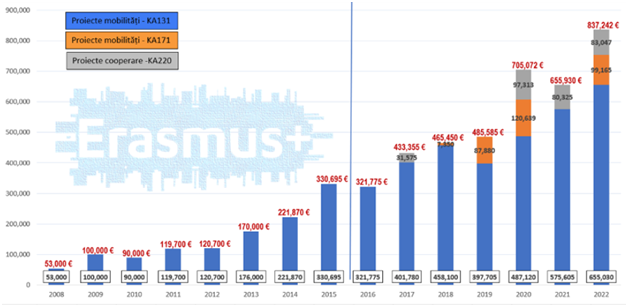Considering that in the academic year 2007-2008 the Naval Academy "Mircea cel Batran" carried out its first participation in the Erasmus sectoral program, the number of placements was relatively low. Informally, it was observed an increase in student interest regarding the advantages offered by placements and the emergence of competition between students applying to the program.

Study mobilities (Key Action 1) involve training courses, placements, teaching activities, study or volunteering internships, youth exchanges, job-shadowing activities. These are carried out on the basis of institutional projects (institutional agreements) existing between partner countries, respectively sending/receiving institutions/organizations/companies.
Students who decide to apply for a study mobility can benefit from a study or placement grant, for each study cycle: bachelor, master, doctorate. The mobility period must be between 3 and 12 months.
Students can receive an Erasmus + grant intended to cover transport and subsistence costs during the mobility period. Erasmus students are exempt from paying tuition fees, registration, examination access to laboratories or libraries and study areas, regardless of whether or not they receive an Erasmus + grant. Details regarding the application procedure for a study mobility can be found in the Study Mobilities, Placements sections.
Strategic Partnerships are projects that create "bridges" between partners from several countries with the aim of increasing international cooperation by developing quality and innovative educational products. Given that in the case of mobility projects the emphasis is on the development of people (either beneficiaries or staff of the organisations involved), strategic partnerships naturally complement them by focusing on organisational development.
Strategic partnerships are carried out in the following directions: